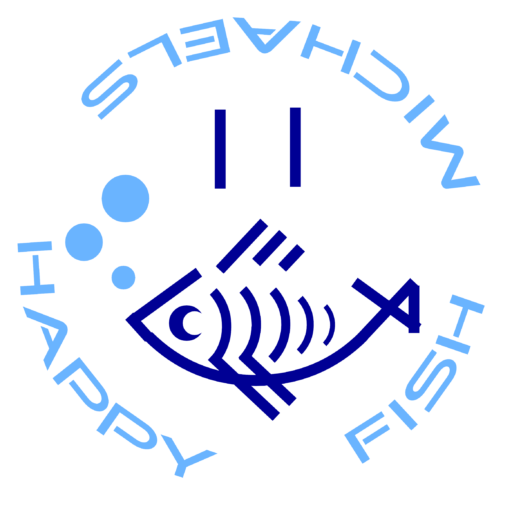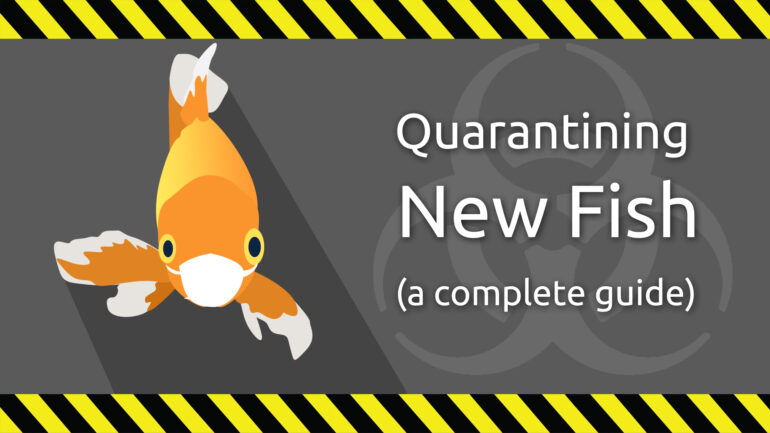- Your cart is empty
- Continue Shopping
New Fish – Guide to Quarantine
Lack of proper quarantine is one of the biggest reasons for failure in the fishkeeping hobby. Learning proper precautions and treatment will help you have the best aquarium with the least amount of risk.
Very weak, stressed, sickly or little fish may not make it through quarantine no matter what treatments you use. This is normal. Sometimes everything they’ve been through is just too much.
All fish should be quarantined REGARDLESS of where you get them from.
Even if you get the healthiest, disease-free fish to start with, they’ve been through a lot. The fish just needs to rest up a bit before being introduced to the others. Some breeders and importers quarantine for you and do it very well. For fish that come from reliable sellers like these, quarantine is very simple. Isolation for 4 weeks minimum. Why 4 weeks? It gives you time to address any issues that could pop up after the stress of shipping and ensure the fish is fully healthy before introducing them to the others. Your new fish are also really weak and don’t have resistance to whatever pathogens may be in your main system with your other fish. Those pathogens are things your existing fish may be used to living with just fine.
Suspicious Fish
But when your fish comes to you from the pet store – or even from many online retailers who don’t do this- you HAVE to assume they are sick and treat them as such. Because the truth is…… They probably will be if they aren’t already. Maybe you’ve heard somepeople say you should only treat fish like they are sick if you see signs of a problem. Actually, if you do that – you’re automatically at a disadvantage. Because goldfish can carry low levels of pathogens without showing any obvious signs of them. (It takes a microscope to do that.) By the time they actually start showing signs, many times IT’S TOO LATE. You might succeed in battling back the parasites for a time and think victory is yours…… Only to have your fish succumb to a lethal secondary bacterial infection.
Preventative care is the key to not being stuck in a situation where you are desperately trying shotgun treatments and endangering your entire collection in the process.
How to Set Up Your Quarantine Tank
Here are some tips for your quarantine tank itself:
- Tank: The quarantine tank doesn’t have to be anything fancy, and it doesn’t have to follow the same stocking guidelines as your main tank. It can be an old used tank you found at a thrift store. It can even be a Tupperware tub. Whatever you use, your quarantine tank ideally should be in a separate room to prevent particles from the water traveling through the air and getting into your other tanks. NEVER share equipment between your QT tank and your other tanks unless it is fully sterilized in between uses. And don’t forget to wash your hands well after interacting with your QT tank.
- Filter or Airstone: In a best-case-scenario, you would use a filter totally pre-cycled with liquid ammonia to keep the water clean. At the least, it should have an airstone to keep the water oxygenated and the water tested and changed frequently to keep it clean. One trick I use is to use a filter packed with carbon to keep ammonia and nitrite levels down. I don’t like to perform anything other than a 100% water change when treating with salt as without a salinity meter it’s hard to keep track of how much salt is in the water. That’s why using carbon has proved to be an easier option for me.
- Light: It’s important to reduce stress as much as possible after everything your new fish have been through. You’ll want to turn off or reduce lights (if you have them) for the first 24 hours. Bright lights can really stress new fish in a new environment. Your quarantine tank does not need to have its own light.
TREATMENT #1
Do not feed the first 2 days, they will be fine, this helps to not bring ammonia levels high fast. Use VitaChem and SeaChem Discus Trace to make your RO water it’s very best. Always test PH to match where they came from as best as possible
Medications we use:
- API Furan-2
- API General Care
- API Fungus Cure
- API Fin & Body Care
- API E.M. Erythromycin
if they persist repeat this treatment
TREATMENT #2
Change water 50%
Amoxicillin and Ciprofloxacin 1 full treatment.
TREATMENT #3
PraziPro 2 treatments back to back (4 days each)
TREATMENT #4
Hikari Ich-X 1 treatment
RECOVERY
Remaining days just clean water properly adjusted to 6.3-6.8, with hardness between 1° and 4° dKH (18 to 70 ppm) warmed to 92°F, feed normally and observe
AFTER 4 WEEKS YOUR NEW FISH ARE READY FOR THEIR BIG DEBUT



